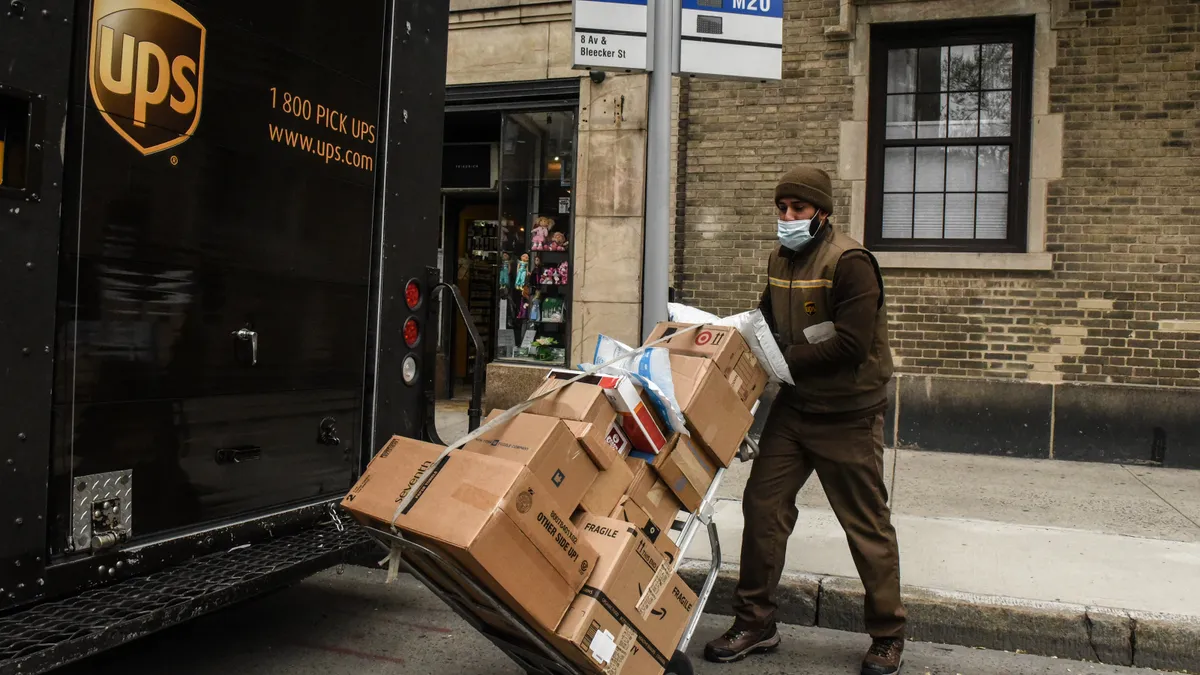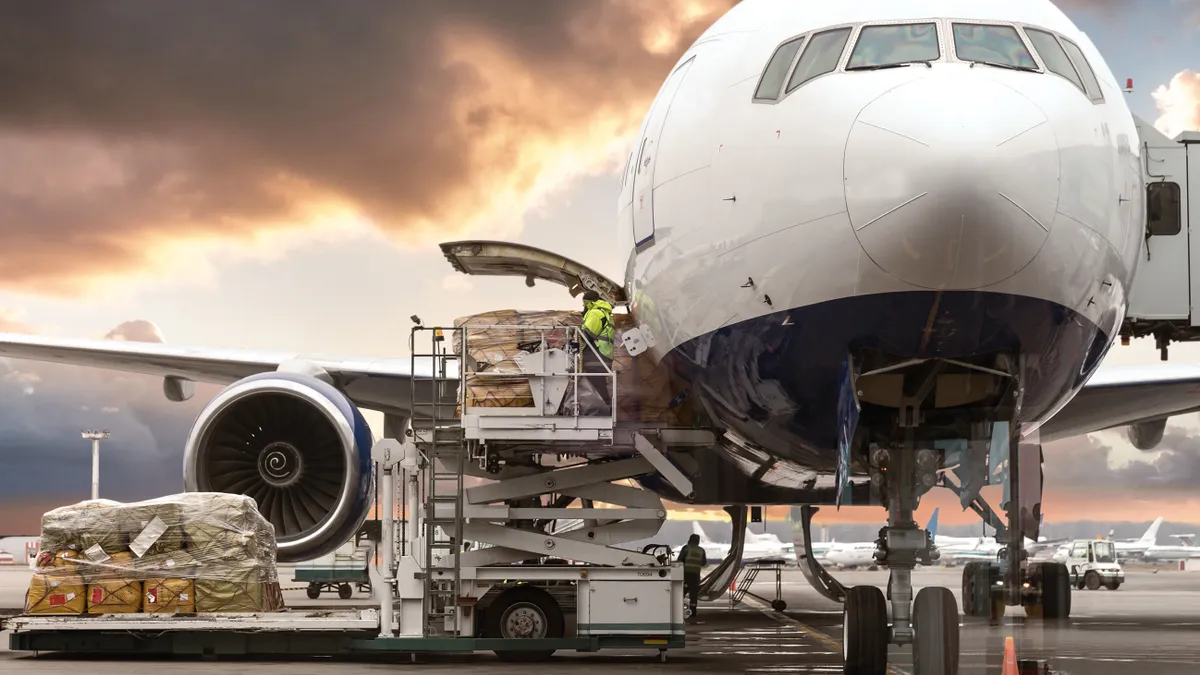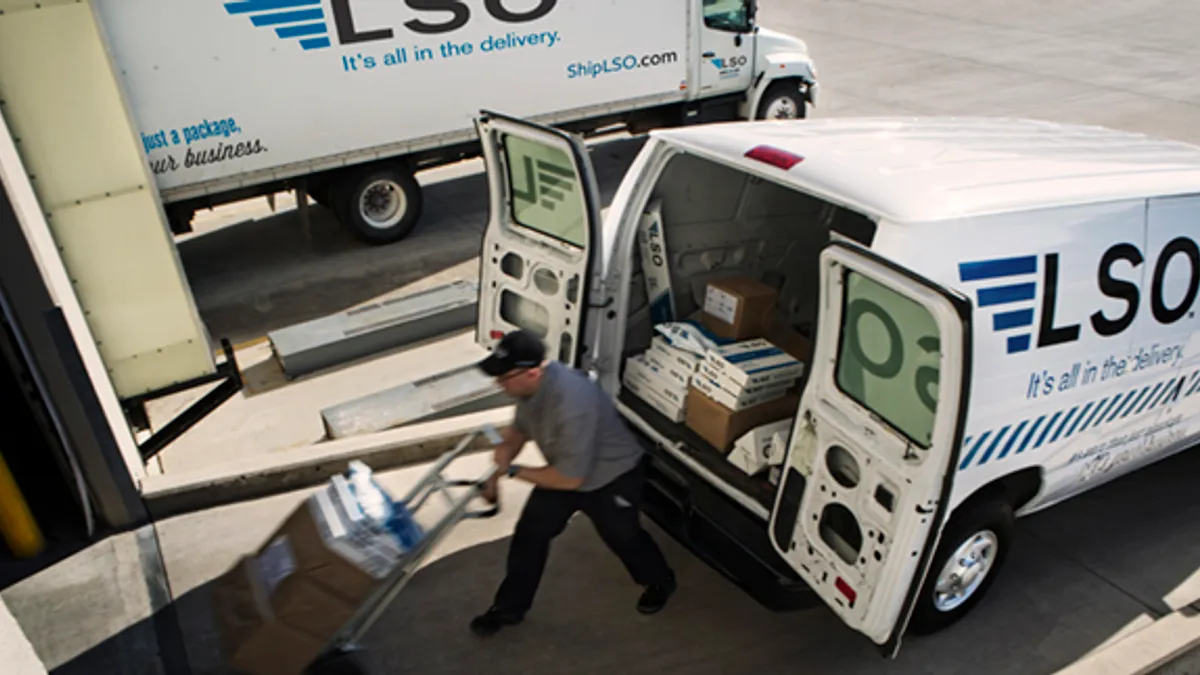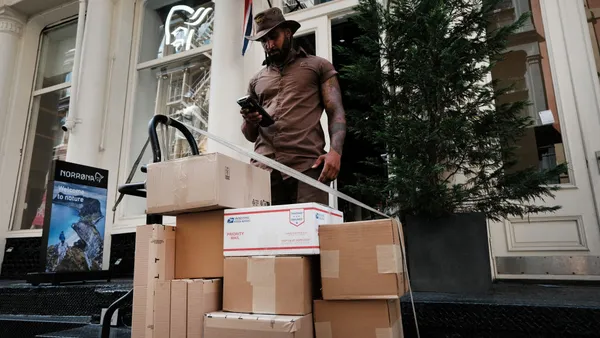Editor’s note: This story is part of an ongoing series diving into the opportunities and challenges supply chains face in 2023. Read the rest of the series here.
A labor union representing 350,000 UPS workers could strike this summer if a new contract agreement isn't reached on time, threatening the delivery of millions of parcels.
Teamsters leadership has made it clear they are taking a hard-line stance on pay, scheduling and other issues ahead of negotiations for a new labor contract with UPS. The current contract is set to expire July 31.
“Our union is resolved to win the best contract for UPS members and to reset the standards for wages and benefits in this industry by August 1, 2023," Teamsters General President Sean O’Brien said in a statement last year. "We won’t extend negotiations by a single day."
UPS, meanwhile, has stressed the need to reach an agreement, saying it aims to negotiate a contract that benefits all sides. The carrier has been touting its employee benefits and long-standing relationship with the Teamsters.
"Our focus is on reaching an agreement that provides a win-win-win, for our employees and the union, for UPS, and for our customers," the company said in a statement.
Here's what shippers need to know about the state of contract talks, the likelihood of a strike and how to prepare for any supply chain fallout.
Where do negotiations stand?
National contract negotiations don't kick off until April, Teamsters spokesperson Kara Deniz said, but the Teamsters' UPS National Screening Committee has been reviewing various proposals for what should be included in the Master Agreement.
Committee members sorted and compiled more than 11,000 proposals submitted by locals from across the country during a Jan. 9 meeting in Washington, D.C., according to a Teamsters news release. Five screening subcommittees also met to review proposals on areas such as safety and health.
"The screening of proposals will determine what will ultimately be put forth to the company when National Master Agreement negotiations begin," the release said.
What are the top issues UPS and the Teamsters need to address?
The Teamsters union is largely looking to address scheduling issues that have cropped up since the COVID-19 pandemic fueled a surge in package volumes, Deniz said in an interview. Some drivers say that they continue to be forced into working a sixth day or taking "excessive overtime."
A driver works about 9 hours a day on average, but schedules can vary according to customer needs, according to the UPS statement. Still, the carrier recognized the need to find the right balance between serving customers and meeting drivers' desired work hours.
"Last year, UPS met individually with drivers to better understand their unique preferences, and we are making adjustments where possible," the company said.
Deniz said the Teamsters are also looking to eliminate discrepancies in pay and other areas between full-time drivers and 22.4 combination drivers. The latter category, with the number referring to an article in the current contract, covers employees typically making deliveries on a Tuesday-through-Saturday schedule.
"It's the same job for less pay and a slightly different schedule in terms of days on the job," Deniz said of the combination driver positions.
In addition to eliminating pay gaps, the union is also looking to negotiate a member pay increase for both full and part-time employees, but declined to provide a specific amount. Full-time package delivery drivers at UPS have a $95,000 annual average wage, while the average part-time employee earns $20 an hour, according to the company.
How likely is a strike?
Both sides aim to reach an agreement by the July 31 contract expiration. If that effort is unsuccessful, the Teamsters say they are ready to strike.
"We’ll either have a signed agreement that day or be hitting the pavement," O’Brien said last year.
A UPS strike wouldn't be unprecedented ground for the union. In 1997, 185,000 UPS Teamsters halted deliveries for more than two weeks before a new contract agreement was reached.
Alan Amling, distinguished fellow at the University of Tennessee's Global Supply Chain Institute and former VP of corporate strategy for UPS, said in an interview that he believes the two sides will ultimately come to an agreement, though it won't be easy.
“But I also think the risk of a strike is the highest it's been since 1997, and it's a completely different environment,” Amling added.
This round of bargaining is also likely to be far different from 2018, when the Teamsters ratified a contract despite the majority of participating members voting against it. O'Brien, who will be the face of union negotiations this spring, had won his election for Teamsters general president in 2021 as a vocal critic of how the previous contract agreement went down.
"[The Teamsters] should've went back to the table or struck the employer," O'Brien said of the agreement in a candidate debate prior to his victory. "Unfortunately, that didn't happen and our members got stuck with a contract that they voted down.”
How disruptive would a strike be for shippers?
Out of UPS' roughly 534,000 employees worldwide, 350,000 are represented by the Teamsters, per a recent company report. A strike would create large-scale disruptions in the company's network.
It would also likely create headaches for FedEx and other last mile carriers as shippers attempt to divert their deliveries to alternatives.
"Even though I think UPS will try to maintain limited service in the event of a strike, the capacity being taken out of the market will drive up pricing with other carriers," Amling said.
UPS' U.S. ground delivery network handled more than 17 million packages daily on average in 2021. With that level of activity, the company held a strong position in the parcel delivery sector overall at 24% of market share by volume in 2021, according to the Pitney Bowes Parcel Shipping Index.
UPS handled nearly one quarter of U.S. parcels in 2021
Despite concerns over the negotiations, in a July earnings call, CEO Carol Tomé said the company continues to win business with customers who are aware of the upcoming negotiations.
"We are building contingency plans, and we will take care of our customers," Tomé said.
What can shippers do to protect their supply chains?
Amling recommended for business-to-business shippers to have buffer stock on hand in the event of UPS disruptions, while business-to-consumer shippers should be ready to call on alternative carriers.
However, existing contract arrangements can make it difficult for many shippers to divert a large share of their volumes to other delivery providers, said Transportation Insight Chief Strategy Officer John Haber. Volume-based discounts incentivize businesses to rely on one carrier for much of their shipping activity, and minimum volume commitments penalize shippers that don't meet certain thresholds.
"For a lot of shippers, their hands are kind of tied if they move volume, which is dangerous if UPS goes on strike," Haber said.
Ultimately, Haber advised shippers to begin contingency planning as soon as possible, since capacity at other carriers will run out fast.
"If you wait until June, it will be too late," he said.



















